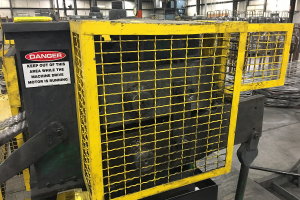OSHA settlement sometimes needs a second opinion
OSHA continues to cite employers aggressively, and at the same time is suggesting and frequently mandating certain types of abatement. This may overstep their authority, but many employers enter into a formal or informal OSHA settlement trying to avoid expensive litigation and abate alleged violations following agency’s suggestions or mandates.
If OSHA’s suggestions are reasonable and feasible, obviously that’s the right way to go. However, FDRsafety has been contacted on numerous occasions after an OSHA settlement agreement is in place and the company has discovered that agency’s suggested or mandated abatement method has a major impact on issues such as productivity or even increases hazard to employees. On several different occasions we have been informed by employers that the OSHA abatement simply does not allow the operation to run efficiently and/or effectively.
With my 25 years at OSHA and eight as a vice president of a major integrated steel company, and my last 10 years as president of FDRsafety, I am confused and disturbed because so much cost and waste of OSHA’s and a company’s resources could have been avoided.
Before you enter into any non-formal or formal agreement with OSHA, some of the key issues to be addressed are:
- Does the cited OSHA standard actually apply to your operations?
- Are there voluntary consensus standards that should come into play concerning your abatement of the alleged violation?
- Is there a hazard to employees and is there reasonably predictable exposure and/or risk?
- Does the suggested or mandated OSHA abatement reduce risk of injury to your employees?
- Does the suggested or mandated OSHA abatement interfere with production and/or maintenance?
Way too often, I find situations where the suggested or mandated abatement does not actually reduce risk of injury and sometimes significantly increases risk. If you include impediments to production, companies are faced with a real problem. Many times, a company could have avoided this situation by contesting the alleged violation and resolving it with an agreement that included a reduction in hazard, exposure and risk while allowing maintenance and or production to go forward in an effective and efficient manner.
I realize it is tempting to avoid the cost of litigation, but it could be very cost effective to contest the violation when you compare these costs to the value of keeping your operations running safely, efficiently and effectively with acceptable risk and in compliance with the actual OSHA regulation. Before you sign an informal or formal OSHA settlement agreement, I encourage you to contact a third-party, objective occupational safety and health consultant for a “second opinion.”


